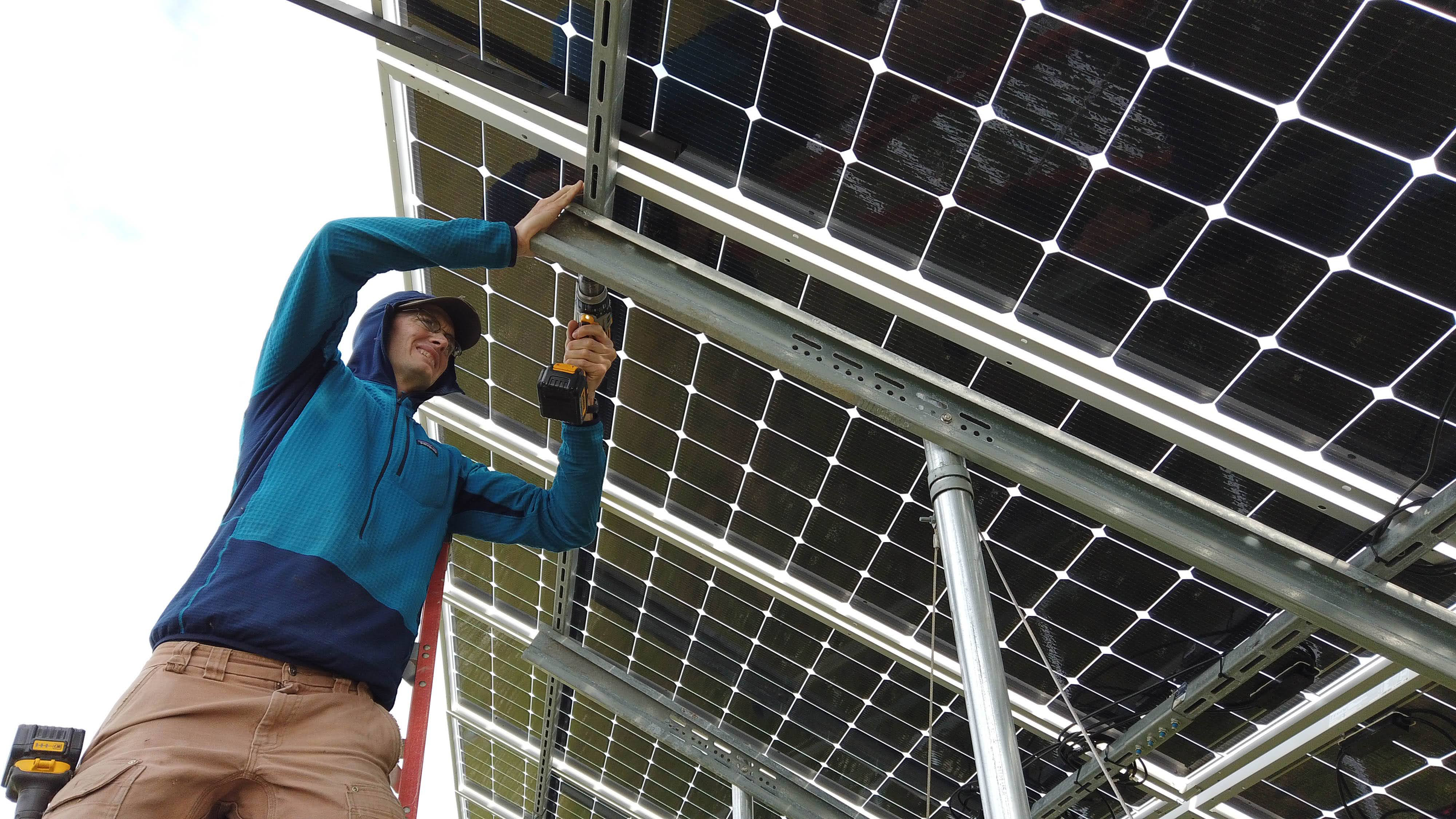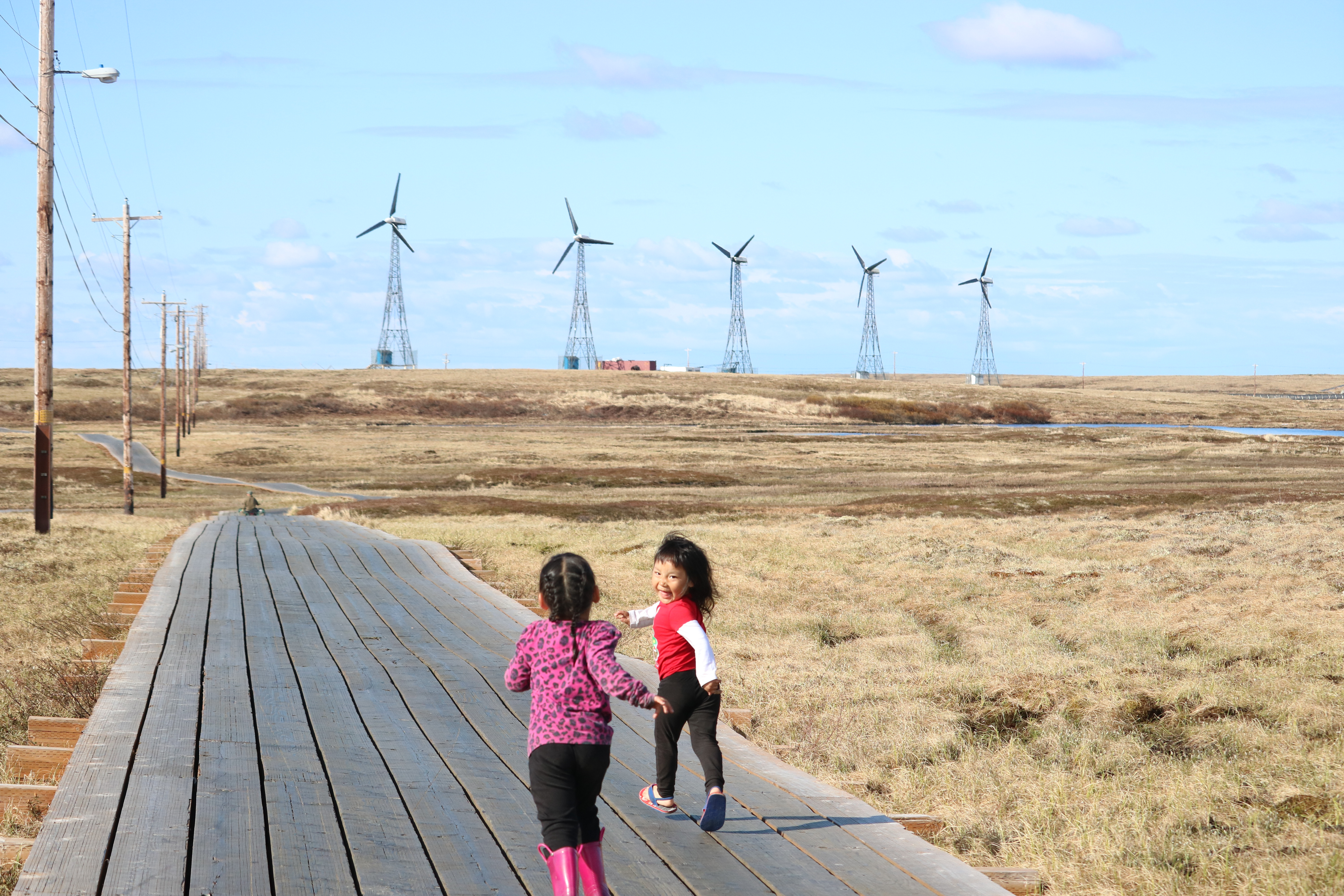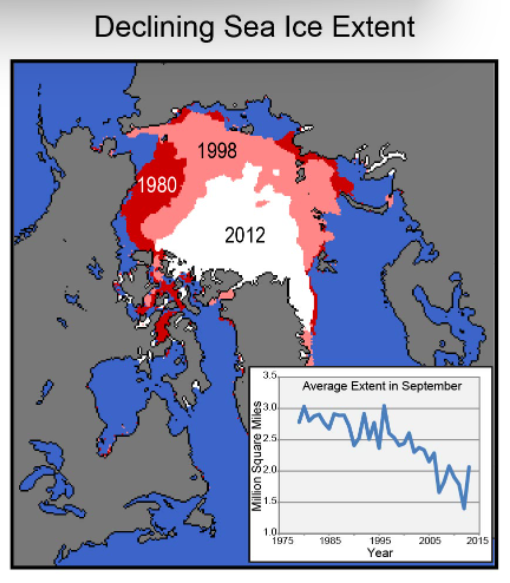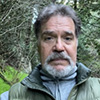Why Alaska? Why Now?

Chris Pike of ACEP installs a monitoring device on solar panels in Kotzebue, Alaska.
Alaska is a place of rugged individualism and weather extremes. This land of the Midnight Sun is also a pioneer in remote power systems or microgrids, some being in operation in the last frontier for nearly a century. A microgrid is exactly what it sounds like. It is a small grid with the capability to be self-sufficient, operating as islands of power whether installed in a remote village or integrated into a grid network, such as Alaska’s Railbelt grid.
With the total state population of less than 800,000 people -- but a landmass larger than Texas, California and Montana combined -- Alaska offers unique opportunities for individuals and institutions to make a major impact when it comes to energy innovation. It is a state whose energy history neatly aligns with the global trends toward a more distributed, decentralized and disaggregated energy system.
In a place where at times the sun never sets or hardly even rises, Alaska is a unique vantage point upon which to review the world’s current energy conundrum. How do we supply reliable and clean electricity in a state whose economic development has for so long been tied to the extraction of fossil fuels?
A View of Alaska from the Golden State

Children playing on boardwalks in Kongiganak, Alaska.
Having resided in California for over 40 years, what prompted me to change my job and seek to spread the word about how Alaska became a pioneer in the deployment of microgrids? As one could imagine, the answer is not a simple one.
First off, Alaska has more microgrid capacity than any other state in the US. Furthermore, these microgrids are dominated by remote power systems, microgrids that look a lot more like the rest of the world than the rest of the United States. According to Guidehouse Insights, my previous employer, Alaska holds a commanding lead over all other US states with almost 3,500 MW of installed capacity. This figure does not include nearly 200 more microgrids that rely purely on diesel fuel, which represent prime opportunities for future renewable energy capacity additions.
Unlike California and other parts of the U.S., energy innovation in Alaska occurred in a bit of a public policy vacuum. Renewable energy integration in the north is driven by economic necessity, not top-down policy incentives or mandates. Renewables are installed because they make economic sense. This is evidenced by the fact that although state funding from oil revenue for the state’s Renewable Energy Fund has declined significantly over time, the total installed capacity of renewable energy projects continues to increase, especially in high energy cost areas of the state, according to data collected from the Alaska Center for Energy and Power.
Microgrids capable of running on 100% renewable energy were designed and implemented to reduce cost and to increase resiliency in Alaskan communities. When diesel fuel can cost more than $1 per kilowatt hour and may only show up once or twice a year, it is prudent to diversify fuel risk. Furthermore, renewable fuels such as wind and water are free. They also don’t pollute the atmosphere, an issue gaining attention due to recent evidence that climate change is accelerating. Increasing reliance upon renewable energy not only improves regional air quality but increases employment opportunities by substituting wages for labor rather than expenses for fuel. The impacts of climate change are arguably most visible in northern and Arctic regions. Communities in Alaska, particularly Alaska Native communities, are observing big and often life-altering changes to their seasonally driven traditions and livelihoods. Integrating renewables increases community resilience while aligning power production more closely with cultural norms of environmental stewardship and preserving the land for future generations.
Microgrids in the 49th state incorporate a much greater diversity of renewable energy resources than microgrids operating in the rest of the US. Hydroelectricity, geothermal, wind and hydrokinetic technologies have all been deployed in Alaska. Solar photovoltaic (PV) arrays are also gaining traction in the northern region despite long months of seasonal darkness. Colder temperatures and the reflectivity of snow in the spring have been found to actually improve solar panel performance, particularly for bifacial panels. It turns out solar PV is not as impacted by frigid temperatures as was once thought.
Alaska has another unique resource as well – it’s people. Being so isolated, so large, with so few people, this is a state where an individual can really make a difference. And with a largely deregulated and decentralized energy market, individuals can make a real difference in championing projects near and dear to their hearts. They can make a difference not only here within the boundaries of Alaska, but across the world.
California is often held up as a model for energy innovation. Yet too often, a bureaucratic maze stands in the way of progress. It seems more often than not state regulators get bogged down in a command-and-control mindset that still toes too much toward our centralized monopoly past rather than fully embracing a distributed energy future. Could it be that California too could learn from the Alaska energy experience?
A Climate Change Consensus

Alaska, and the rest of the circumpolar Arctic, is bearing the brunt of climate change. Here, it doesn’t matter if one is a Republican, Democrat or an independent. Everybody sees that Alaska’s landscape is being transformed by climate change and that the impacts are severe. Images of coastal communities facing severe erosion caused by the lack of land-fast sea ice have made national headlines (See Figure below), but subtler changes exist too. The growing season in interior Alaska has increased by 50% over the last 100 years – bringing with it new opportunities for agriculture, but also new challenges related to invasive species and forest fires.
Stereotypes of American ingenuity live large in Alaska. I look forward to learning more about what is going on here but equally interested in how lessons learned in Alaska can help the rest of the world make the transition to a more resilient and sustainable energy future. The rubber really does meet the road here. If energy systems fail, the consequences could be quite severe. Microgrids don’t just provide electricity, they also need to provide heat, water and telecommunications. It is no cliché to say that lives depend on reliable, resilient power systems. This expansive view of what a microgrid can do offers a promising vision for those seeking solutions to energy challenges and regions ranging from the Asia-Pacific islands, small rural villages in Africa, indigenous people in Latin America and isolated villages in the arid deserts of the Middle East. While weather conditions may vary, the flexible and adaptable properties of microgrids can address a variety of energy needs in all climates and across all national boundaries.
The purchase of Alaska from Russia in 1867 was highly controversial. Many thought it was a boondoggle, or worse (earning the newly purchased territory the nickname “Seward’s Folly”). With the discovery of oil and massive buildout of the infrastructure to deliver this precious fossil fuel to the rest of the nation, views of Alaska changed. And those views are changing again as the world takes stock of alarming reports of accelerated climate disruption. Just as Alaska became an integral part of the fossil fuel infrastructure that delivered massive economic benefits to the country, Alaska is now showing the way on how to create a more resilient and sustainable energy system for all citizens, not just a select few.
I am excited about spreading the word about the innovation occurring in Alaska. But also motivated to get more directly involved in real projects that make a difference. It is fine to speak from Ivory Towers about what should be or could be. It is much more rewarding to see the results of one’s ideas, public policy suggestions and cutting edge technologies on real people and communities.
Alaska’s Journey on energy, as well as food and water supplies, speaks volumes about how necessity is the mother of invention. Whether the future holds technologies such as modular nuclear plants, hydrogen infrastructure of carbon capture and sequestration, remains to be seen. The one certainty about Alaska is the necessity of microgrids. So that’s why working with my colleagues in Alaska is clearly the place for me to be.
This write up is part of ACEP's Blog, From the Grid, a place to find voices and insights from Alaska's energy sector.



